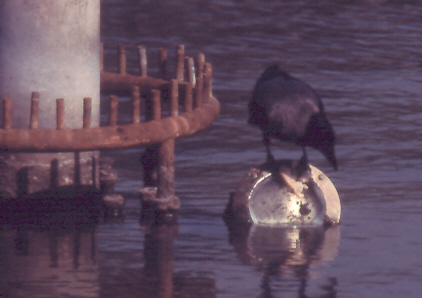|
|
Amplifiers and Indices: Empirical and Theoretical StudiesOren Hasson |
|
|
Animal Signals
Letters to JMS:
Contact: |
This page presents studies of amplifiers. There has been an increasing interest in amplifiers as signals. Sometimes, there is also some confusion, especially regarding Amplifiers and Indices (however, there is also some confusion between indices and handicaps). Hasson (1997), Stenthseth & Sætre (2004) and Harper (2006), explain much of this confusion. However, I intend to add here a few notes to elaborate further on some other subtleties in the distinction between "amplifiers" "indices" and "handicaps".
In the following, there is a partial list of theoretical and empirical studies of amplifiers. In (my spare) time, I intend to add my thoughts and comments on some of these studies, or of other studies to come.
Galván I., J.J. Sanz 2007. The cheek plumage patch is an amplifier of dominance in great tits. Biology Letters. Online Date: Tuesday, November 20, 2007. This study nicely shows that greater cheeks in males are positively correlated with mating success (early breeding) of high quality males, but negatively with that of poor quality males, hence the white patch's amplifying effect. Interestingly, this is not the case for females, whose breeding date is not correlated with quality. However, I would expect that the cheek patch in both males and females may function as an amplifier during threat. What is unsolved here is how does it work: Does patch size improve perception of patch color uniformity, as suggested by the authors? Or perhaps of head dimensions? Or does it improve perception of movements and head orientation (individuals of different social status may behave differently during aggressive interactions)?
Ljetoff M, Folstad I, Skarstein F, Yoccoz N.G. 2007. Zebra stripes as an amplifier of individual quality? Ann. Zool. Fennici 44:xx-xx
Molly E. Cummings, Francisco J. Garcia De Leon, Diane M. Mollaghan, Michael J. Ryan. 2006. Is UV ornamentation an amplifier in swardtails? Zebrafish. 3(1): 91-100.
.McClintock W.J, G.W. Uetz 1996. Female choice and pre-existing bias: visual cues during courtship Schizocosa Wolf spiders (Araneae: Lycosidae). Anim. Behav. 52: 161-181.
Harper, D.G.C. 2006. Maynard Smith: Amplifying the reasons for signal reliability. J. Theor. Biol., 239 (2: Special Issue in Memory of John Maynard Smith) 203-209.
Grether GF, Kolluru GR, Nersissian K 2004. Individual colour patches as multicomponent signals. Biol. Rev. 79:583-610. This is an interesting paper that deals with multiple signaling, in part, by looking at the interactions between handicaps and amplifiers, although Hasson 2000 (signal assemblages), which discusses multiple signaling in length, is overlooked.
Stenseth and Sætre 2004. Why animals don't lie. Science, 304:519-520. Here, there is a nice explanation on the distinction between amplifiers and indices, which lacks in Harper and Maynard Smith 2003 (Animal Signalling).
Moya-Laraño, J., Taylor, P. W., Fernandez-Montraveta, C., 2003. Body patterns as potential amplifiers of size and condition in a territorial spider. Biol. J. Linn. Soc. 78, 355-364.
Kevin J. McGraw, Geoffrey E. Hill
2000. Differential Effects of Endoparasitism on the Expression
of Carotenoid- and Melanin-Based Ornamental Coloration.
Berglund A. 2000. Sex role reversal in a pipefish: female ornaments as amplifying handicaps. Ann. Zool. Fennici 37:1-13.
Hebetz, E.A., G.W. Uetz 2000. Leg ornamentation and the efficacy of courtship display in four species of wolf spider (Araneae: Lycosidae). Behav. Ecol. Sociobiol. 47:280-286.
Fitzpatrick, S. 1998. Colour schemes for birds: structural coloration and signals of quality in feathers. Ann. Zool. Fennici 35:67-77.
Brooks, R. 1996. Melanin as a visual signal
amplifier in male guppies. Naturwissenschaften 83:39
|
